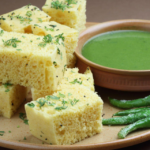
Biryani is one of the most loved and flavorful dishes in the world. Its rich history, unique taste, and cultural significance have made it a favorite across continents. But where did this delicious dish come from? How did it become so famous? Let’s explore the fascinating journey of biryani, from its invention to its rise as a global food icon.
The Birth of Biryani: The Birth of Biryani
The origin of biryani is deeply rooted in the history of India and the Mughal Empire. The word “biryani” comes from the Persian word “birian,” which means “fried” or “roasted.” The dish was influenced by Persian and Central Asian cuisine, brought to the Indian subcontinent by Mughal emperors during the 16th century. However, it was not the same biryani we know today.
The Mughal rulers and their royal kitchens played an essential role in shaping the dish. The Mughals brought with them spices, rice, and cooking techniques that transformed simple rice dishes into something more sophisticated and flavorful. It’s said that the Mughal chefs created biryani by layering marinated meat (often chicken or lamb) with rice and cooking it slowly, allowing the spices to blend perfectly. This cooking style became the foundation of the biryani we know today.
In addition to the Mughals, trade and cultural exchanges between India, Persia, Central Asia, and the Arab world also contributed to biryani’s evolution. The mix of spices, meat, and rice was perfect for the rich culinary traditions of India, and biryani soon became a royal and festive dish.
Biryani’s Spread and Global Fame
Although biryani originated in India, it did not stay confined to one region. Over time, it spread to various parts of the world, evolving and adapting to local tastes. The dish traveled along trade routes, with people from different cultures putting their own spin on it.
In Pakistan, biryani became a national dish, with variations like Karachi biryani and Sindhi biryani. It was introduced to parts of the Middle East, where rice and spice dishes are common, and the Arab world embraced its rich flavors. In Southeast Asia, countries like Malaysia and Singapore have their own versions of biryani, with some incorporating local ingredients like coconut milk.
As the Indian diaspora spread across the world during the 19th and 20th centuries, biryani traveled with them. Today, biryani is enjoyed in countries around the globe, from the United Kingdom to the United States, and has become a part of international cuisine. It is served at restaurants, in homes, and at celebrations, making it a symbol of cultural exchange and global appreciation.
Why Is Biryani So Famous?
Biryani’s popularity can be attributed to a number of factors. Its rich, aromatic flavors, created by the perfect blend of spices like saffron, cardamom, and cinnamon, make it an irresistible dish. The layering of rice and meat, often cooked in a sealed pot, locks in the fragrance and moisture, making every bite a treat.
One of the reasons biryani is so famous is its versatility. It can be made with different types of meat, including chicken, lamb, beef, and even fish. For those who prefer vegetarian options, there are delicious variations with mixed vegetables, paneer (Indian cottage cheese), or even mushrooms. This wide variety makes biryani suitable for all tastes and dietary preferences.
Biryani is also a dish that is often associated with celebrations. It is a common choice for weddings, festivals, and special gatherings. Its grand presentation and rich flavors make it the center of attention at any event. Sharing a large pot of biryani is a symbol of togetherness, bringing people from all walks of life together to enjoy a communal meal.
Biryani in Modern Times: A Global Favorite
Today, biryani is no longer limited to the Indian subcontinent. It has become a global food that is loved by people everywhere. From food festivals to street food markets, biryani is enjoyed in every corner of the world. It’s not just served in traditional ways; chefs have also started experimenting with new flavors, ingredients, and cooking styles, giving biryani a modern twist while still preserving its traditional essence.
In cities around the world, you can find biryani served in various forms, from the classic slow-cooked version to quicker, street-food-style biryanis. The dish has even been adapted to meet contemporary tastes, with fusion versions like “biryani pizza” and “biryani burgers” emerging in some places.
Social media and food influencers have played a big role in biryani’s rise to global fame. Beautifully presented biryanis often make their way onto Instagram and food blogs, attracting food lovers from all over. Biryani has become more than just a dish—it’s a symbol of culture, tradition, and the joy of sharing food with others.
Conclusion: Biryani’s Timeless Appeal
Biryani is much more than just a meal—it’s a story of cultural fusion, royal kitchens, and the uniting power of food. From its royal beginnings in the Mughal courts to its place as a global favorite, biryani has captured the hearts of people all over the world. Its rich, fragrant flavors, the joy of sharing it with loved ones, and its ability to bring people together make biryani a dish that will continue to be celebrated for generations to come.
Whether enjoyed in its traditional form or in a modern variation, biryani’s timeless appeal is sure to remain a favorite for food lovers everywhere.
More About us
For More Cooking Course you Can Visit our Website




